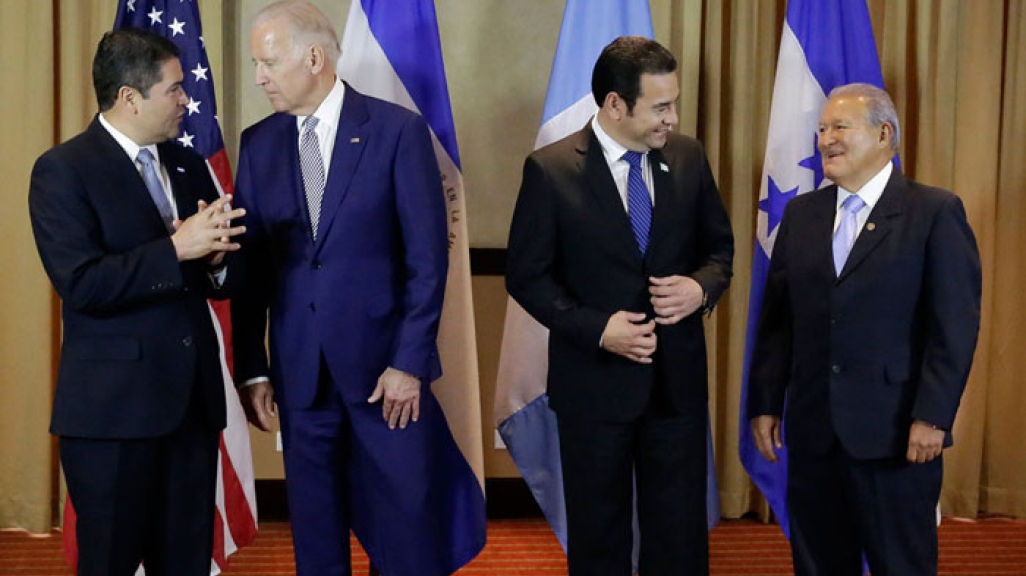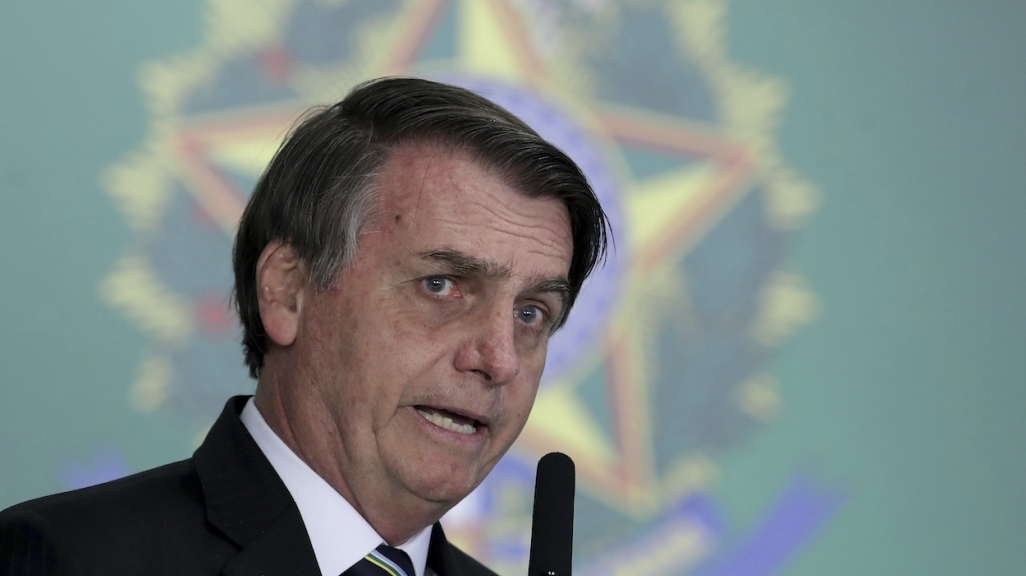Update: Central America and the Alliance for Prosperity
Update: Central America and the Alliance for Prosperity
First came U.S. congressional approval of $750 million for the initiative. Next comes how to spend it.
Before U.S. Vice President Joe Biden got on a plane to Mexico, he met in Washington with the presidents of El Salvador, Guatemala, and Honduras on February 24 to discuss plans for the Alliance for Prosperity, an initiative between the four countries aimed at boosting security and economic support in an effort to stem a refugee crisis. In December, the U.S. Congress approved $750 million in the 2016 budget for development assistance for Central America, down from the $1 billion President Barack Obama originally requested. The same $750 million figure is included in the 2017 budget proposal Obama submitted February 9. At the February 24 meeting, Biden and the heads of state of the Northern Triangle countries met to consider where to invest the funds. Meanwhile, the ebb and flow of migrants continues amid ongoing Central American violence.
Budgets and prerequisites
The $750 million appropriated for the alliance for 2016, which launched in November 2014 after the migrant crisis peaked that summer, is a significant increase from previous U.S. assistance to the region. From 2008 to 2015, Washington disbursed $1.15 billion through the Central America Regional Security Initiative (CARSI).
The majority of this funding focused on the three countries with some of the highest rates of violence: El Salvador, Guatemala, and Honduras. The 2017 budget apportions at least $65 million for El Salvador, $112 million for Guatemala, and $98 million for Honduras in development assistance. The other $475 million is appropriated to military financing and training, CARSI, and other countries in the region.
But there are preconditions for at least 75 percent of the total funds. The Northern Triangle countries will have to prove they are working to reduce migration and human trafficking, combat government corruption, and decrease poverty—just some items among a considerable list. The U.S. State Department and Agency for International Development, which are jointly in charge of administrating the money, will have to report to Congress by September 30 on whether sufficient progress has been made, and if not, funding can be suspended. These countries are also required to cooperate with the United States to stem the flow of migrants.
Honduras has made its own commitment of $965 million to the alliance.
Another migration surge
The rush of Central American migrants, particularly unaccompanied children, crossing the U.S.-Mexico border reached crisis levels in 2014. While numbers are down from a peak of over 10,600 lone minors and 12,700 migrants traveling with families apprehended in June that year, a considerable number of unaccompanied minors keeps making the journey. From October 2015 through January 2016, U.S. border patrols apprehended 20,455 unaccompanied children from nine crossings in the U.S. southwest, a 102 percent increase over the same period a year earlier. Another 24,616 Central American migrants were apprehended in the same time period—a 171 percent increase.
The resurgence is a product of grave levels of violence in the region. The Northern Triangle countries registered some of the worst homicide rates in the world by the end of 2015. El Salvador had the highest rate with 104 homicides per 100,000 people. That’s almost twice as many as Honduras, which registered 57 per 100,000, and Guatemala at 36 homicides per 100,000.
The Obama administration’s decision to launch deportation raids at the start of 2016, which on New Year’s weekend flew 121 Central American migrants out of the country, spurred backlash. Given another upswing in migration from the Northern Triangle, the White House responded by the end of January, announcing the expansion of the U.S. Refugee Admissions Program to accept more Central American migrants. The president did not specify how many more would be allowed to stay in addition to the 3,000 slots already planned for 2016.









